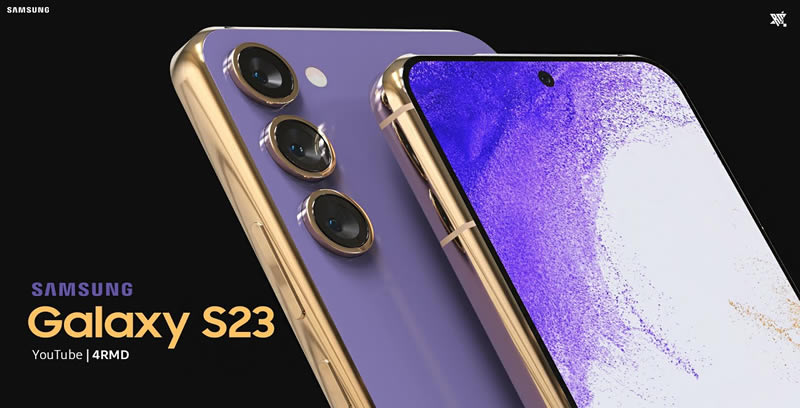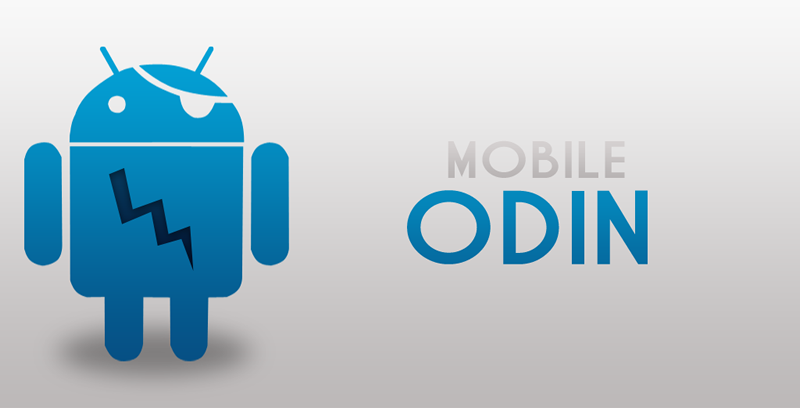Search result
 |
 |
|
this article is not available |
||
 |
 |

The gaming industry is becoming very saturated due to the vast number of consoles and PC's hitting the market in recent years. All providing the very best of a gaming experience for a whole range of users. But where does mobile gaming fit in? With a number of purpose-built phones making their way onto the market, there are a number of well-known console titles beginning to make their way onto a mobile platform with unprecedented success. Here, we are looking into what the future holds for mobile gaming and how advancements in technology will help to shape the future of this growing industry.
Processing Power
As the world of mobile gaming continues to expand, the phones have also become much more advanced in order to keep up. With technology giants such as Samsung creating there most powerful smartphone yet in the form of the S10, and the Apple iPhone X the processing power of each and every mobile device is increasing. The brand new S10 contains a processor of up to 12GB of ram, meaning that you have a large amount of processing power at your fingertips. In addition to this, there is the option for a vapour chamber cooling system available in the S10+ as well as an infinity-O display and Dolby sound this phone is fully optimised for those that love gaming on the go.
On-Demand gaming Services
There are also a number of other on-demand gaming services as Google Stadia that have recently made their way onto the market. This on-demand gaming service allows gamers to play AAA titles such as Doom and Assassins Creed just with an internet connection and a controller. This is great for the connectivity of gamers as it allows for those that wish to connect and play anywhere they want with a simple internet connection allowing for games to be played with ease.
On the other end of the spectrum, there have been more and more gambling companies making the move to mobile gaming and tapping into the vast number of mobile gamers as a result. A number of mobile-friendly slots online casinos have had great success, as indicated by the reviews that they are receiving, such as those found at https://www.vegasslots.co.uk/reviews/. As the interest from the gambling industry as well as the console gaming industry continues to expand you are sure to see a number of games finding their way onto Android and IOS platforms.
Developments in 5G
Another aspect that is changing the future of mobile gaming is the implementation of 5G. With a number of phone manufacturers such as Huawei and other phones soon to hit the market, 5g phones https://5g.co.uk/phones/ are becoming all the more popular as a result. This technological advancement is great for those that love mobile gaming as well as those that are developing as this opens up the possibility for new and improved gaming experiences through faster online connections. Although this technology is still in the beginning stages of its life, there are a number of mobile companies that are looking to adopt the technology and bring it onto the market on a much larger scale.
Augmented Reality
Following the widely successful Pokemon Go, there has been an increased focus in the number of mobile games utilising the use of AR for a fully immersive gaming experience. Not only have Niantic paved the way for the AR revolution in mobile gaming but they are also looking to replicate this success with a new title Wizards Unite. This new title allows you to combine the wizarding world with your own, by combining port keys and battle other wizards to explore new areas and gain experience. In addition to games such as this AR has also made its way into a number of other mobile games creating an immersive experience as a whole.
Virtual Reality
Another example of the very best of mobile gaming is the implementation of VR. With a number of technologies out there such as Samsung VR and Google Cardboard, you can take your phone with your favourite VR games and play in a fully immersive experience. This is ideal for those that love to be fully immersed in a game, as it gives you the chance to remove yourself from the outside world whilst playing your favourite game. Although this is only a recent addition to the mobile gaming industry, this is slowly making its way into a number of different industry's offering new ways to play that suit every gamer.
The future of mobile gaming is looking very bright as the technology and capabilities continue to expand. As this technology continues to expand the gap is being shortened between the conventional console gaming experience and mobile experiencing opening up existing possibilities for both industries.
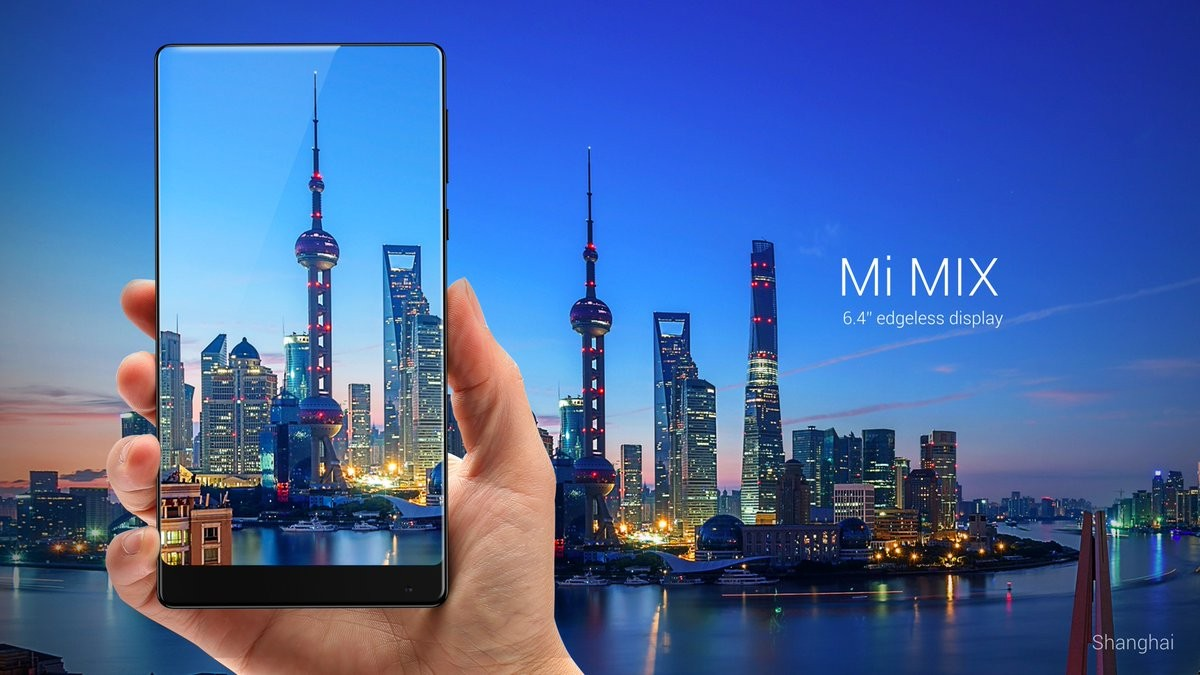
The Xiaomi Mi Mix is a "concept" phone that you will actually be able to buy from November 4, provided you live in China. The ¥3,499/¥3,999 ($515/590 approximately) price tags seem almost underpriced, considering the kind of hardware and innovation it brings with it. The 6.4-inch Full HD display in front of the device nearly has no bezel with a screen-to-body ratio of 91.3%, something that was only a concept till now. The only bezel it actually has is at the bottom of the display, which houses an 8-mp selfie cam.
However, it would be unjust to judge the Mi Mix based solely on the beautiful all screen display, without taking into consideration the fact that it has removed most traditional sensors, as well as the microphone for phone calls! Yes, the Mi Mix senses proximity via ultrasound and a piezoelectric speaker does the work of the microphone via utilizing the metal frame; which in itself sounds like some crazy piece of science fiction tech to us! The futuristic design was apparently achieved by the engineers at Xiaomi by working with the French designer Philippe Starck.
The side buttons and the back of the Mix are ceramic and the display is curved near the corners to add to that full-screen look which it sports so flawlessly. Just in case the innovations seemed insufficient, note that the Mi Mix is also supported by the Qualcomm Snapdragon 821 SoC, 4GB/6GB RAM, 128GB/256GB internal storage, a 4,400mAh battery, a 16-mp rear camera, an 8-mp front camera and even a 3.5mm jack. To be honest, we are blown away by the Mi Mix and what it promises to bring to the table.
Saikat Kar (tech-enthusiast)

The mobile payments market has come along leaps and bounds in the past few years. We've went from using them hesitantly to making these payments a part of our everyday lives. Even in stores that accept contactless or for sending money to one another, we've been using this payment method more and more.
Right now, there's a massive war ongoing between various payment providers. Alternate payment providers, like Apple Pay and PayPal are now becoming even more popular than banks. This is because they are flexible, easy to use and generally don't add extra charges to their payments. These eWallet services now offer a viable alternative to traditional banking, which users are quickly catching on to.
Back in 1998, PayPal first came onto the scene and there's no question that this revolutionised how we pay. This product was well placed at the beginning of the online shopping boom and this was a great time for this to occur. People wanted to experiment with online payments but were still wary of the dangers that it posed. PayPal was a convenient way for users to get extra security while using this service.
As far as payment methods are concerned, PayPal is still king. This is true in just about every sector, from online shopping to gambling. The sheer number of sites accepting this payment method is almost frightening, as it's undoubtedly the most popular eWallet. Take mobile bingo pay with phone bill sites as an example, these bingo sites outnumber those that accept Neteller, Bitcoin or Paysafecard.
Through using these alternate payment methods, the online gambling sector is able to entice even more players that perhaps would not have deposited if this was not an option. This helps the industry to look more legitimate and get rid of some of the stigma surrounding the industry.
Apps for mobile payments just make the whole process much more convenient. Players can easily keep an eye on what they're spending and their own security. Banking providers are attempting to keep up with this by pioneering their own apps but these don't usually have quite as much flexibility. They also have more stringent security, often requiring three step processes to verify a payment.

For this reason, alternate mobile payment methods like PayPal must have more fraud protection in the case that their security is subverted. This allows them to offer easier ways to make payments while still accepting liability if they are breeched, which makes users a lot more comfortable.
In the future, it seems that Google will be one of the driving forces of innovation. They're currently working on a product that would use the contactless of your card, while it's still in your handbag. All of their innovation seems to be geared towards making the process easier and faster for users to pay.
Over the next few years, we'll probably see some massive changes to the way we pay with mobile. PayPal will likely still top the charts but this could shift quickly if another payment method does things better.
Technology is currently expanding at an exponential rate as the age of digitalisation takes further root in society. The modern payment concept seems to combine a traditional cash transaction that is slowly but surely coming to an end with an ever-growing network of ePayment via smart devices as the old and new battle it out as digitalisation comes of age. Of course, as the technology develops rapidly, keeping in touch with the latest trends can often be a tricky concept, but there are some features which are obviously taking hold in society. It is those listed here that will dominate the future of mobile payment technology.
The mobile apps are upping the game
Scan the Android library or the Apple app store and what greets you is a continuous stream of applications to download and use. Most of these you see are game-related, whether it's games on https://www.facebook.com/ or https://www.usrealmoney-casinos.com/, there is an incredible array of choice. With epayment becoming a vital part of how consumers now purchase services, all it takes is one click of a button and an add-on or wager can be bought or placed instantly.
Some apps that are making the future of mobile payment much easier though are those that provide a so-called ‘ewallet'. Enabling customers to purchase whatever they want in person or online, the ewallet is revolutionizing how payments are being made, but why is that?
How improved security has fired mobile wallets into the public eye
The whole purpose, essentially, of the mobile wallet is convenience. Taking out your physical wallet or purse and trying to sift through the notes or coins to pay for goods and services can often be a bugbear for consumers. Pulling out your phone, however, and going straight to the wallet app can make things easier - there's no faffing about for the right change and it's a simple transaction.
But, convenience alone is not enough to convince the average consumer to ditch the bulging pocket or handbag for a mobile phone. Security is also a major factor when handing over hard-earned money - and so it should be.
Digital authentication is the name of the game for mobile wallet apps. And, most offer or require dual authentication to use. So, even if people make a purchase with a mobile wallet, a pin could still be required. Some smartphones take this authentication and security even further by possessing biometric authentication.
It sounds complicated, but it ensures that only authorized app users are able to use a phone or smart device in order to purchase a product or make a deposit on Paripop, thereby providing an ideal way of identifying the owner of an account and thus reducing chances of identity theft and fraud.
If you don't believe the writing, then believe the statistics; by the end of this year, payments on a mobile wallet are predicted to hit $500 billion - a massive rise from the $75 billion accrued in 2016. That rise accounts to a yearly growth of almost 80% over a period of half of a decade.
What this means for physical payment cards
Despite them being popular with the older generation, all this hype and growth surrounding mobile wallets has obviously prompted the decline of physical payment cards. As cash effectively gets trumped by the online world, the need to have an actual physical card in your pocket is decreasing with each passing year. Of course, non-cash payments are still a credit and debit card hotspot, with over 70% of Americans using at least one credit card.
But it's not just a mobile wallet where the future of payment lies. The concept of near field communication - or NFC - is transforming how transactions between consumers and merchants are completed, meaning payments can be made on the go, rendering physical forms of payment in various environments obsolete. The reliability and efficiency of such notions has been a key catalyst to the soaring of mobile payments.
The concept of mPOS and its societal impact
Where the future of mobile payment technology will centre around is the demand for mobile point of sale (mPOS) technology. Such units have come into being as a way of making or receiving payment without having to use in-store cash registers and sale terminals, driving the credit card into obscurity too.
The flexibility provided by mPOS as well as their portability - both compact and wire-free - make them ideal additions to trade shows, concerts and even food trucks as transactions can be completed wherever customers are. The Apple stores in particular showcase the mPOS in action perfectly. Customers are able to purchase goods with any employee instead of queueing in a line for the cash registers.
But, mPOS isn't just a trend that is around for a few years then disappears, it will be the future of mobile payment. There will be nearly 28 million mPOS devices in use by 2021, compared to the 3.2 million in 2014. Such a hike in numbers is largely down to the flexibility and convenience of mPOS in this current climate with merchants able to conduct business anywhere, whereas they were previously just used in brick-and-mortar locations.
Social commerce knocks shopping out of the park
If there is one trend right now that is showing no signs of letting up it's the power of social media. It is king with people in the streets, on public transport or merely at home scrolling for hours on end through endless sites and stories. No wonder then that businesses are trying to market such a huge audience.
But, technology has developed in such a way that when users sift through Instagram, Facebook or Snapchat and come across a product or service that they like the look of, no longer do they need to leave the app in order to search any further. All that is required is a click on the shop now button and the user can start buying - and all this without being redirected to an online store.
As a result, the payment process is much faster and smoother as a mobile shopping cart integrates with social media technology, and with the help of chatbot checkouts and autofill, customers tend to be satisfied much sooner than if they went in store.
Mobile is the future
Mobile wallets and mobile point of sale devices are where the future of mobile payment lies. The trends are already present - the ability to purchase goods in stores such as Apple from one particular employee rather than waiting for the checkout till. But, this will develop further into much greater automated payment capabilities, the type of which have been discussed above.
Though it will perhaps take years for the development to be perfected, it is clear that mobile is where the future of payment, payment processing and payment getaways lies. It's not a question of if, but simply when this will occur. The future of technology is exciting, but this could develop a cashless society much quicker than people think.
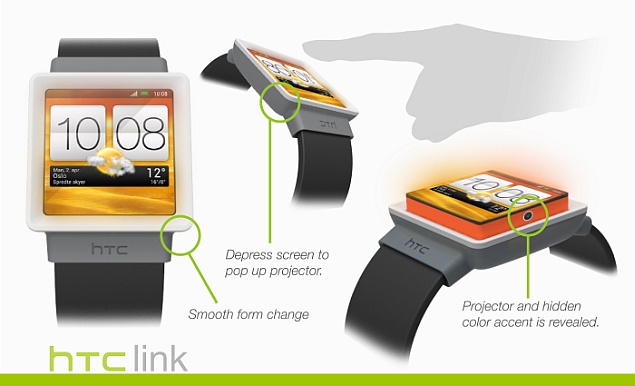
HTC executives reveales the company's plans for a wearable device in a conversation with Re/code. In line with past rumors, the Taiwanese manufacturer confirmed that it will not enter the market for such products until next year.
According to Jason Mackenzie, the head of HTC Americas, the company originally had plans to launch a wearable in this time frame. However, the gadget is not ready for the spotlight just yet.
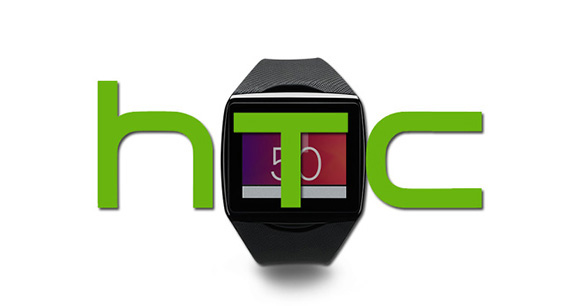
Furthermore, Drew Bamford, the man in charge of the HTC Creative Labs team that works on wearables, took a jab at the competition. He pointed to the media that none of the current manufacturers has gotten the wearable device concept right.
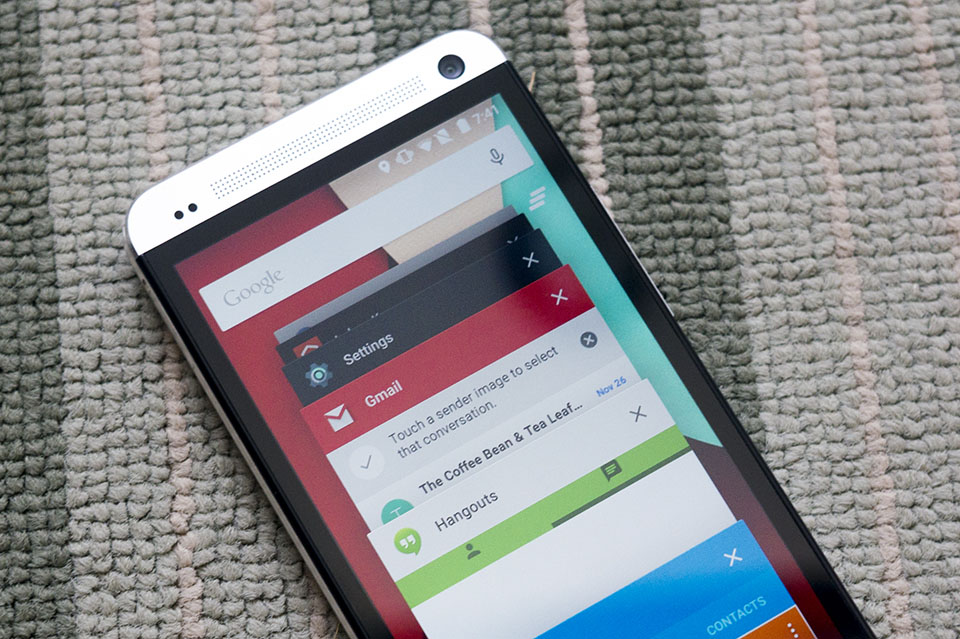
HTC updated its 2 years old flagship, HTC One (M7), to Android 5.0.1 Lollipop with Sense 6 UI. At the same time Google released the latest Android build version 5.1 Lollipop. Well, If you own an HTC One (M7) we have some Bad News for you buddy.
HTC decided to End the One M7 support, The handset will not be get any more major Android updates from this point forward. Not even Android 5.1 Lollipop or Sense 7 UI.
@kennymaclean Only the GPE version of M7 will receive 5.1. Our target is early April. Thanks.
— Mo Versi (@moversi) March 18, 2015
This information came from Mo Versi, HTC's VP of Product Management, so it's as official as can be. The HTC One did get updated to Android 5.0 Lollipop, so the new UI is in there already. But the many bug fixes and subtle improvements brought about by Android 5.1 won't ever officially be available for this smartphone, unfortunately.
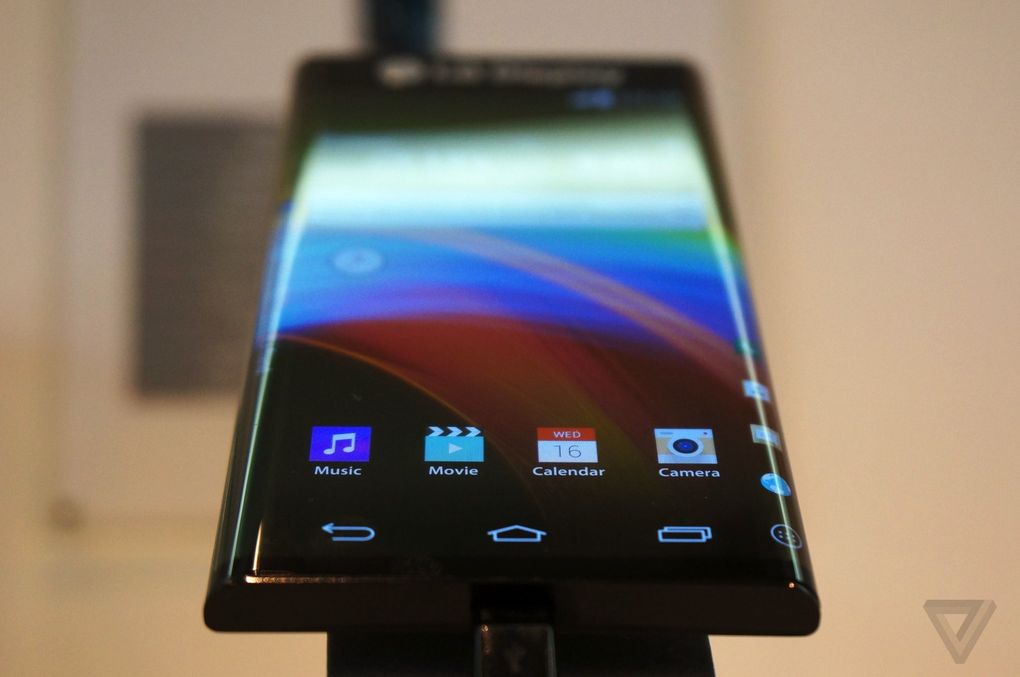
Do you like the curved displays on the S6 Edge, S7 Edge or the "hot" new Note 7? If you do, we have good news for you. If you don't, well, you better start developing a taste for them, because Samsung is all for curves now and the flat screen flagship variants might soon be a thing of the past. According to the Korea Herald, Samsung will not only be ditching the flat screen displays, but also the term "Edge" altogether in 2017. They further state that those curved displays will come in the same 5.1-inch and 5.5-inch size variants, as seen in the last two years. The dual-edge displays are already being manufactured by Samsung Display as per the report.
Allegedly, this decision was taken by the OEM after the S7 Edge outsold the S7 by a significant margin, in spite of being the more expensive one among the two. If you are not familiar with other rumors about the Galaxy S8, know that they are there and they all sound good (as they usually do!). A 4K display for amazing VR experience, a significantly more powerful Exynos 8895 SoC and a dual rear camera setup are all part of the rumor mill, but it's way too early to consider them anything more than that yet.
Saikat Kar (tech-enthusiast)
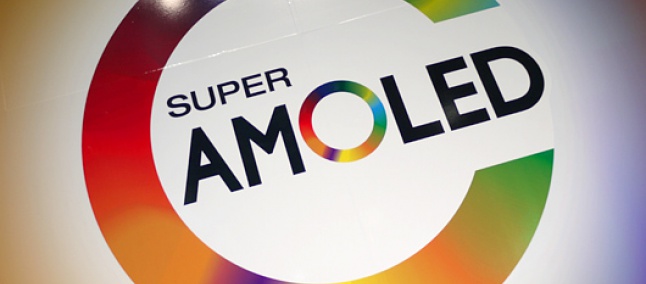
Recently, the Wall Street Journal (Chinese Edition) has published a piece about a new business contract between Apple and Samsung. According to their source in South Korea, the 3-year contract requires Samsung to supply OLED smartphone panels to Apple for upcoming iPhones in 2017 and beyond. Although the rumor regarding this contract has been around for a while now, this adds new credibility to it. Arguably, Apple is still talking with JDI, LG, Sharp and AUO before the deal becomes final.
The article adds previously unknown details by stating that this order involves production and supply of about 100 million 5.5-inch AMOLED displays that are possibly meant to be used in the iPhone 7s. Judging by Apple's current trend of reserving the larger 5.5-inch panels for their "Plus" models, chances are that these will be used to make the iPhone 7s Plus rather than the regular 7s. Whether they will still be calling it "7s Plus" or not, remains to be seen.
Previously, famous Apple analyst Ming-Chi Kuo had stated that Apple will not be releasing any OLED phones before 2018, but he has changed his opinion in light of the new situation. Now, Kuo is of the opinion that Apple will release at least one version of its future iPhones in 2017 with an OLED display. Rumors and predictions also suggest that Apple could be going back to the glass-metal design of the iPhone 6 and it is perhaps for the best.
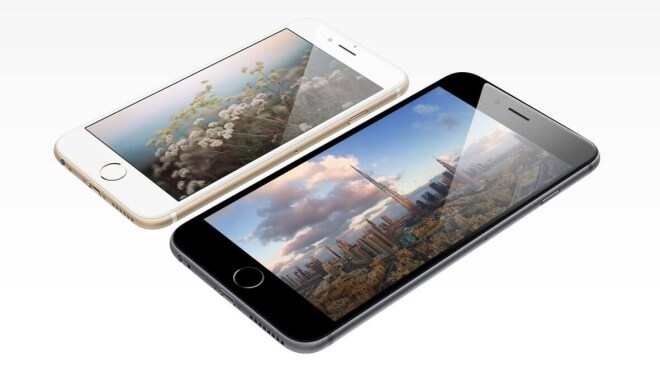
Lately, we have been hearing a lot about OLED panels for future iPhones and from what we have heard, Apple will make the switch to OLED from IPS somewhere around 2018. While that date may seem far away, preparations have probably started as we are talking about the iPhone here!
The truth is that as far as OLED panels are concerned, there aren't a lot of manufacturers that can produce these displays on massive scales. It was thought before that although Samsung is the biggest name in OLED production, Apple might approach JDI or Japan Display Inc. for the supply. The rumors were based on the fact that Apple and Samsung are not exactly on "friendly" terms anymore.
A new set of rumors however, point out that the Korean giant is going to invest anywhere between $6.64 billion to $7.47 billion very soon into their panel production wing. Furthermore, the rumors also state that in 2016 itself, a sum of $2.49 billion to $3.32 billion is going into Samsung's OLED production process. Supposedly, this would bump up the production rate to 30,000 - 40,000 sheets on a monthly basis. An additional $4.17 billion will be invested next year for ensuring 45,000 units are manufactured monthly.
As far as rumors go, these massive numbers are the results of a contract between Samsung and Apple that has already been signed. This is what we have heard so far, but as always, take the "leaks" and "findings" with a pinch of salt as nothing has yet been officially declared.
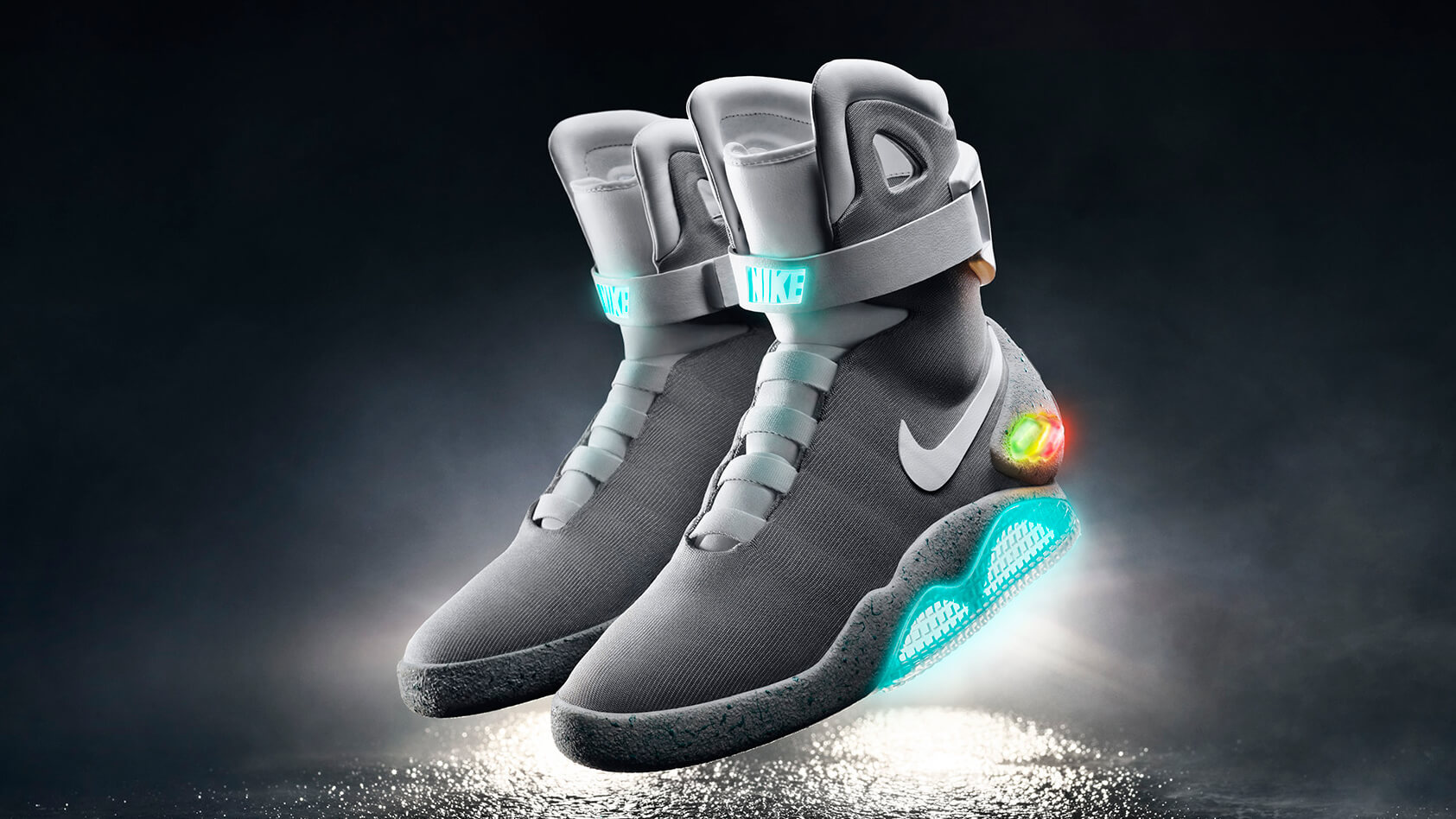
Steven Spielberg Masterpiece starring Michael J. Fox "Back to the Future" movie was showing how the world should have been like nowadays. We already saw the Lexus Hoverboard that was released in the past copule months. Today, Nike has announced they will be making replica Marty McFly trainers with self-tying laces (that appeared on the 2nd part of the movie).
In 2011, Nike released replica trainers called Nike Mag, however they disappointed fans and movie geeks by not featuring the self-lacing ability. Yesterday, Nike and Michael J. Fox responded. The Michael J. Fox Foundation tweeted images and videos of Fox wearing the trainers, saying, "This is real. This is today. Coming spring 2016."

The profits will also go towards a good cause. The proceeds will go to the Michael J. Fox Foundation, the charity and interest group dedicated to raising awareness and money to find a cure for Parkinson's disease. Fox is perhaps the most high-profile person who has Parkinson's, however it's estimated 6.3 million people suffer from the disease worldwide.
Nike also hopes the shoes will have a practical function - self-lacing shoes could be a massive help for those with disabilities who find tying shoes difficult.
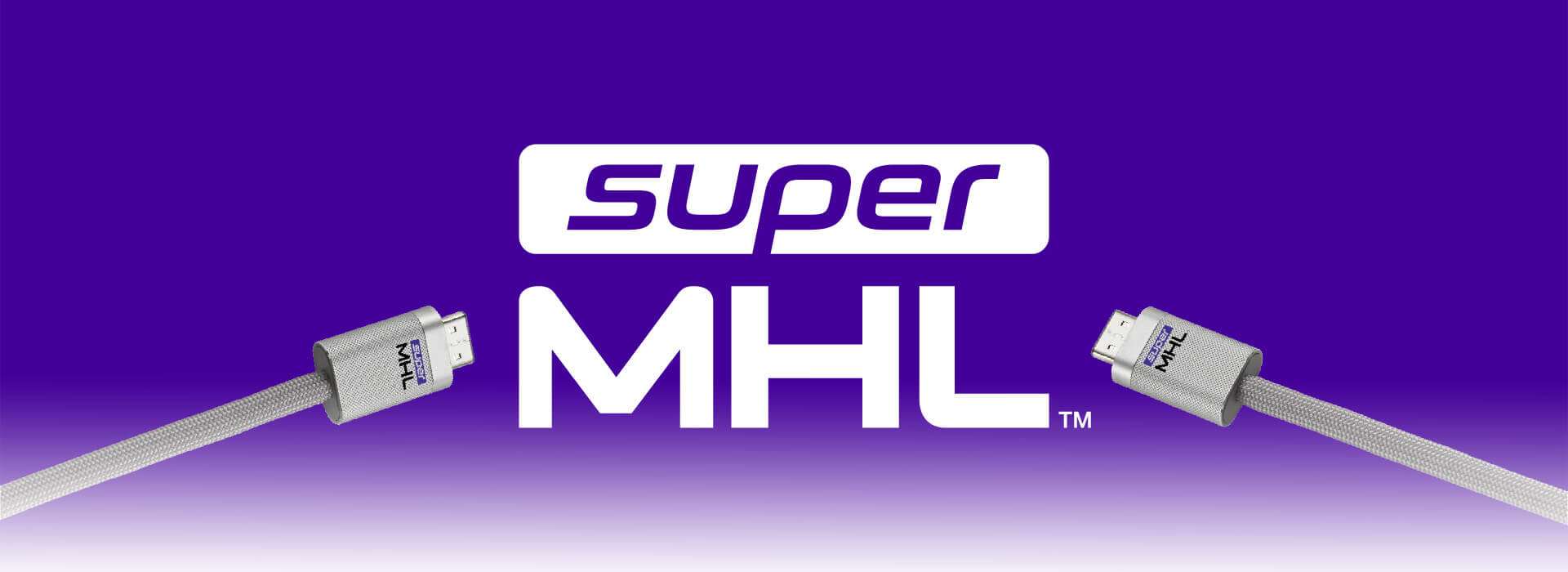
4K is already 2015 standard... What about 8K ? MHL Consortium is looking to future-proof its TV-out connector with the new superMHL standard. Laughing in the face of 4K TVs everywhere the new connector can output 8K video @120 frames per second and 48-bit color depth. Our condolences to internal storage and microSD cards alike.
The superMHL connector supports HDR imagery and can power multiple display, up to 8, from a single source. When connecting to multiple devices (TV, disc player, AV receiver), it can unify their controls so you only need one remote. The connector can practically operate a small cinema with support with Dolby Atmos, DTS-UHD and 3D audio support.

And because outputting 8K@120fps can't be easy, the connector will also supply 40W of power. To cut down on frustration the new Type C connector can be plugged in either way, similar to the new USB standard. superMHL steps on even more USB toes by offering a data connection between devices.

In a world that's increasingly focused on sustainability and eco-friendly solutions, electric vehicles (EVs) have emerged as a beacon of hope for a greener future. As the EV industry continues to grow and evolve, so does the technology that drives it. One crucial aspect of this technological transformation is the software that powers EV charging stations. If you're curious about the fascinating world of eMobility software and want to delve deeper into this realm, we have just the solution for you: "Exploring EV Charging Software," an informative and insightful ebook that promises to enlighten and inspire.
Why does software matter in the sphere of eMobility?
Electric vehicles have come a long way, and their adoption continues to accelerate. To meet the increasing demand for EVs, a robust charging infrastructure is vital. But it's not just about hardware; the software that manages and optimizes charging stations is equally important. In our ebook, we explore the fundamental role of software in eMobility, shedding light on the pivotal part it plays in ensuring efficient, accessible, and sustainable charging solutions for all.
What are the involved entities and what digital solutions do they use?
EV charging is a complex ecosystem, involving charging station operators, network providers, automotive manufacturers, and more. In "Exploring EV Charging Software," we take you on a journey to discover the digital solutions these entities employ to make EV charging seamless and user-friendly. From payment processing to real-time data analytics, you'll gain a comprehensive understanding of the digital tools that drive eMobility.
What are the biggest challenges in creating EV charging software solutions?
Building effective EV charging software is not without its challenges. In our ebook, we delve into the obstacles that developers and companies face when creating cutting-edge EV charging solutions. Understanding these challenges is crucial for anyone interested in the eMobility sector, as it provides insights into the industry's growth and development.
What is the role of internal IT departments in EV charging companies?
Internal IT departments are the backbone of EV charging companies, ensuring that software systems run smoothly and efficiently. Our ebook explores the critical role these departments play in managing, maintaining, and innovating EV charging software. From cybersecurity to user experience, we uncover the multifaceted responsibilities of these unsung heroes.
"Exploring EV Charging Software" is a valuable resource for anyone with an interest in electric vehicles, technology, or sustainable living. Whether you're a tech enthusiast, an environmental advocate, or a business professional looking to expand your knowledge, this ebook provides a comprehensive overview of the eMobility landscape.
To download your free copy of "Exploring EV Charging Software" and embark on a journey through the exciting world of eMobility technology, visit our website or follow the link below. Join us in discovering the future of electric vehicle charging and explore how software is driving this transformation. Don't miss out on this opportunity to stay informed and engaged in the eMobility revolution. Download your copy today and become a part of the sustainable transportation movement!
About the author:
Pawel Malkowiak is co-founder and CEO of Solidstudio. After founding Solidstudio, Pawel was an originator in terms of pursuing expertise in eMobility. With the build-up of a solid knowledge-base on industry’s needs & wants, he now keeps a close eye on products’ development. He’s also hugely responsible for the business’ side and designs the business models for our products. Solidstudio.
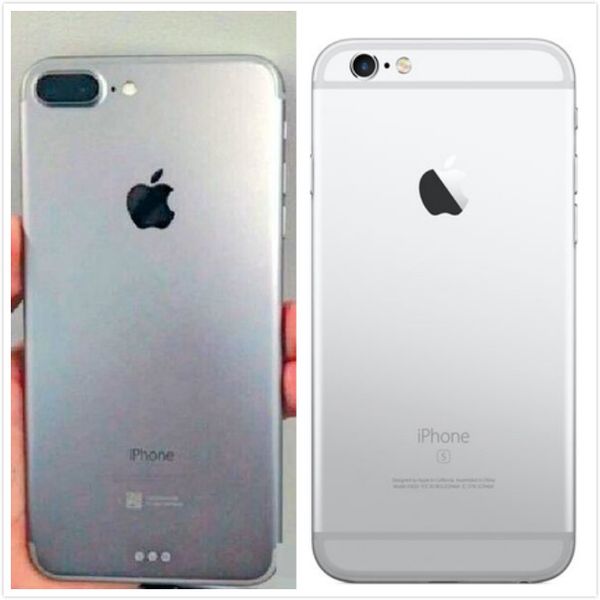
Reports from Nikkei suggests that Apple might be striking deals with the two Korean giants, Samsung and LG. Apparently, Apple is looking to buy OLED panels on a massive scale and as a result, they are looking to these manufacturers for providing them with that. If Nikkei is to be believed, then the deals could amount to a total of $12 billion and we could be seeing the first OLED iPhones by 2017.
Provided Apple does not break its previous streak of releasing iPhones that they have followed for the last eight iterations, then we will see the iPhone 7 later in 2016. This would ideally make the iPhone 7s the first Apple phone to sport an OLED panel according to the information we have now. However, this is a prediction made by taking a lot of things for granted and things do not always pan out that way.
Although OLED panels are more expensive than regular LCD panels used in most smartphones nowadays, Samsung had been using their own brand of AMOLED screens for years now. OLED displays offer inky blacks and punchier colors that just look more vivid than even the best of the IPS panels. It is too early to tell for sure, but it seems like after Apple's sales failed to show a significant improvement in 2015, the company is looking for ways to renovate their iPhones.

The Huawei P20 pro has created a lot of buzz recently by coming out as the first and also the only smartphone to ever boast three rear mounted camera sensors and if we dare say so, it might very well be that Apple is all set to "copy" that feature. According to reports circulating around the internet, the iPhone might be given a single telephoto lens and two dedicated cameras for collecting 3D depth data, which would be necessary for augmented reality apps. The only catch here is that these iPhones will be released in 2019 and not 2018, according to the same rumors.
Additionally, it is also expected that by the next year, Apple will have switched completely to OLED displays, meaning that there won't be any more iPhones with LCD displays from the next year. On a sadder note, it seems that you won't be able to stream your Steam games on your iPad and iPhones anytime soon because in spite of having a deal with the gaming giant Valve, Apple has rejected the actual app which would have allowed that. Apple has been on a roll recently after winning $539 million in damages against Samsung recently.
Saikat Kar

There was a time when the mobile devices in our hands were communication devices only. With the changing world of the Internet though, and the increasing speeds that these devices are capable of the world of mobile gaming has taken off, and we tend to spend more time playing games than anything.
Processing Power
A lot of this has to do with the power of the phone themselves. Whether it be the Android devices, or Apple's iPhones, the strive for faster processors and graphics chips have pushed what the phones can do to whole new levels.
What this means for games is that they can do more, and look better than ever. Whether it be on a phone, or tablet, the level of graphics complexity makes these games more welcoming. Looking better than many of the retro consoles, games are now more complex and more addictive than ever. Some even argue that these devices are the future of gaming.
Social Media
The rise in popularity of social media has seen a rise in the casual games. These are often "free-to-play", and get you addicted before asking for money to "improve" the experience. The ability to not pay anything to play though make it easier for the mobile device user to play these games and to have fun.
Whether you go for online bingo games, Candy Crush Saga or slimmed down strategy games such as Sim City there is a wealth of choice now. All of these games also allow the user to connect to friends, to challenge each other, which adds to the longevity of the gaming experience.
Accessibility
One of the real strengths of mobile gaming though is just how versatile it has become. Games are instantly accessible and can be played anywhere, even social games. Whether you want to play a quick game of online bingo, or a quick game of Candy Crush Saga, the ability is there 24/7.
Your phone is quickly becoming the hub of your technical life. With so much choice, gamers have never been so free to play what they want, when they want. This is why the future of mobile gaming looks very bright, and will continue to grow for a long time to come.
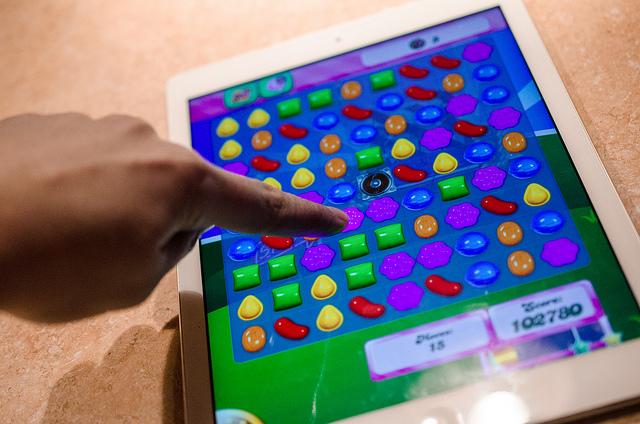
"Playing Candy Crush on ipad" (CC BY 2.0) by m01229
Ever since Nokia introduced phones with the first incarnation of Snake pre-programmed on them, mobile users have become obsessed with skill-based app games as a time-filling distraction. The simple idea was easy enough to get the hang of, but took hours of practice to master. Snake's popularity led developers to focus frequently on skill-based ideas for their games, in an effort to tap into the human desire to conquer challenges.
According to bgo, Millennial and Generation Y gamers have become accustomed to games that test their ability. This highlights how Snake in the late ‘90s went on to influence apps for smartphones, where the primary area of focus is games of skill.
One of the first ever skill-based games for smartphones was Doodle Jump, which was released in 2009. Players had to tilt the phone to guide "The Doodler" up an infinite series of platforms. If you missed a platform you would fall to your doom and have to start all over again. It was hugely popular, and sold 25,000 copies daily for its first 4 months. Later that year, Angry Birds came out, and surpassed Doodle Jump's sales record.
Where Doodle Jump didn't have much longevity in that it was only one level being played over and over again, Angry Birds had multiple stages, each representing a completely different set of challenges. Users could keep testing their abilities using unique birds that had varying special talents, and by breaking down more intricate sets of obstacles. They also got a star rating out of three for each level depending on how well they had done. This gave players an extra challenge - to attempt to get three stars on every level. Games in the series have been downloaded over 3 billion times, which is testament to the game's appeal.
The three-star concept has been used by a number of games since Angry Birds, most notably perhaps, Candy Crush. The idea behind the game was simple; to mix candies together and clear the puzzle area. As bgo suggests, the game was "sickly and addictive" because of its "saga" feature, the fact that there were so many levels to overcome, and because you could see how far your Facebook friends had progressed as well.
The success of these challenging app games has even influenced iGaming developers to start incorporating them into slot games. Online slots are hugely popular, but gamers who like to test their skills are missing out on the action. The new Space Invaders slot at Vegas Slots Online has an added element that requires gamers to shoot the aliens to try to win money, and is one of the first of its kind. Games like this could help online casinos pull in an even wider audience.
Another skill-based app that is pushing the genre in a new direction is Pokémon Go. Players not only have to use skill to throw the pokeball and catch the intriguing monsters, they also have to wander about in real-life settings in search of them. The game incorporates augmented reality, so that the Pokémon are actually seen in the real world, through the lens of the phone of course. With augmented reality glasses set to flood markets in the near future, Pokémon Go could mark the beginning of a new wave of AR games.
The massive success of Pokémon Go and apps like Angry Birds and Candy Crush suggests that a combination of these things could be a massive hit. Will people soon be flinging virtual birds in real-life settings? Or maybe gamers will have to go into shops and move candy around on the shelves? Whatever the aim, skill games are here to stay, but they are sure to become more advanced.

For years, mobile gaming was related to smaller - and, some would say, lesser - experiences. Simple block games were all that early devices could manage, and this led many to underestimate any potential future the platform could have in AAA gaming.
However, recent developments have opened up both Android and iPhone games to a level many would have thought impossible just a few short years ago. So how did we get here, and what's next for mobile gaming?
Bigger and Better Things
In 2005, smartphones made up around 2% of the US mobile market, according to https://www.comscore.com/insights. Ten years later, this proportion had reached 79%, still slowly climbing today.
Having reached many millions of users not just in America but the entire world, it made sense that a wide range of gaming developers and publishers would enter the sphere of smartphone software as well as hardware. As is turned out, this was rarely the case. While many small and new developers saw the opportunities which mobiles represented, most major AAA gaming companies avoided this new avenue near completely.
What eventually drove the modern change in tack is the success of these smaller games, and the adaptations made possible from the iGaming industry constitute a good example. Services like https://www.mobilebet.com/nz made their translations from desktop into mobile gaming opportunities with zero compromises, to show how well it could be done. From slots to live casino games and sports betting, these businesses gave mobile users what they got from their desktop experience, and this is exactly what the iGaming world wanted. Similarly, other niches have also successfully made the transition as well.

"Mobile Device Evolution" (CC BY 2.0) by AdamSelwood
Into Traditional Gaming
The failure of early AAA game series on mobile platforms was - arguably - primarily caused by a misunderstanding of what mobile players wanted. A fantastically terrible example of this was the Dungeon Keeper mobile game from EA. Fans of the classic Dungeon Keeper series had wanted a new entry for years, and the hoped that this mobile game could bring the IP back into the limelight.
Instead of an evolution of what made the old games great, fans received a massively gimped entry which relied on enormous waiting times designed to strip money from the player. Even Peter Molyneux, the designer of the original game, spoke out against it, calling the new entry "ridiculous" in a BBC interview found at https://www.bbc.com/news.
On the opposite end of the spectrum, for a real uncompromised experience, it was the battle-royale games Fortnite and PUBG which raised the bar. These were near identical to the desktop and console versions and as such were welcomed into the market with open arms.
It took years, but all these elements combined have finally convinced AAA video game developers to step up their game. The likes of Injustice 2 Mobile and Trials Frontier are adopting these lessons more progressively than most. While not exactly the same as their original versions due to hardware limitations, they are at least moving in the right direction.
In the future, we could see what few differences remain in the versions of these games decrease heavily, or vanish completely in some cases. The growing popularity of mobile controllers and the arrival of game streaming services like Google's Stadia mean that fewer concessions need to be taken, and the games themselves keep playing better.
With an increase of power of these devices in the future combined with better infrastructure and more interest from traditional AAA gaming developers, the future - finally - looks bright.
Nowadays, more and more people are gambling on the go, meaning that casinos have realized that they need to adapt to the times or get left behind. A casino that does not work well on mobile devices, be it a smartphone or a table, will not be around for long. We are going to take a look at some of the casinos that provide their customers with a great mobile experience.
The Advantages of Playing on a Mobile Device
Well, the main reason for playing online casinos on a mobile device is because it is very convenient, and you can gamble wherever you happen to be. However, this isn't the only reason. Experienced casino players are more than aware of the fact the profit arises from getting a number of small wins over a period of time. This means that the more often you play, the better your chances will be of hitting a nice winning streak.
Furthermore, playing on your mobile device allows you to pass the time while you are waiting for something. For instance, if you are waiting to see thee doctor or if you are waiting for a bus.
Mobile Casino Games
Casinos that care about their players will ensure that their mobile sites or apps allow their customers to play all of the most popular games while on the go.
So, any online casino that is worth their salt will offer the following games:
-
Blackjack
-
Roulette
-
Baccarat
-
Video Poker
-
Craps
-
Faro
-
Keno
-
A variety of slots
Not All Casinos Are Created Equally
More and more casinos are providing their customers with the opportunity to gamble while on the go but, like with everything in life, not all things are created equally. Some casinos have fewer games than their competitors, some have smaller jackpots, while some don't payout that fast.
So, how do you sort the wheat from the chaff? Well, you really don't have to as
those at https://thecasinocitynz.com have
done all of the hard work for you. Take a look here and you will get to know
all of the best casinos around. Their team of professionals have taken the time
to try out a huge number of casinos so that they can inform others about which
ones have the best game selection, which ones offer the best Welcome Bonuses,
which ones provide top notch security, and which ones are fair. Any casino that
they recommend has made it onto their list by merit.
Mobile Casino Bonuses
Online casinos offer great bonuses to entice people in and to get them to stay, but not many people are aware that there are casinos that have unique bonuses for those who use their site on their mobile devices.
Mobile casino bonuses can come to you in many different forms such as free spins on particular slots or a no deposit bonus. Wagering requirements will differ between mobile casinos, but you should always take advantage of them.
When it comes to withdrawing your money, you will usually find a number of different options when playing using a casino's mobile app. This is great as it allows you to choose the option that best suits you. Let's be honest, there is nothing more annoying than finding out that a casino you were interested in joining doesn't have the payment method that you wanted to use.
What Casinos Offer the Best Mobile Experience?
The following casinos are some of the best around at the moment when it comes to providing a very good mobile experience. They all provide their customers with a wide variety of games, are safe and secure, provide great Welcome Bonuses, have a variety of deposit and withdrawal methods, and have a great customer support team.
-
JackpotCity Casino
-
Wildz
-
Gate777 Casino
-
Spin Palace
-
Jonny Jackpot
-
Lucky Nugget
-
Go Wild Casino
-
Mansion Casino
-
Ruby Fortune
-
Gaming Club

The Motorola Razr was one of the bestselling mobile phones before the iPhone era. It has debut it's come back with an admirable foldable phone with same the iconic design with a touch of modern technology. The Moto did an amazing job and would stand out. But the phone isn't a cheap one. It is a $1500 device with the not-so-much screen than other foldable devices.
The original device that was launched back in 2004 left some serious impact on mobile phone designs. The company's mid-range and budget smartphones are also liked for its functionality and value. Moto tried to experiment with its most ambitious and successful design. The Moto Z4 looks almost similar to the original Moto Z. The Razr 2019 is a chance for the company to come back and win the market most suddenly. We have seen foldable devices folding horizontally but the Razr has its idea of foldable design and reveals the folding screen in a vertical way.
When the device is close you get a much smaller screen that gives you small real estate for checking emails, text messages, or make calls. This is similar to what you get on a smartwatch. There is a rear-side camera on the quick-look screen, which becomes a selfie camera when the phone is closed. The device is perfectly small to use with one hand. You can claim shut it fits in your hand or your pocket. This small design makes Razr special and different. The price is although a major factor for many people so this phone is not for everyone. The Motorola Razr 2019 was announced on November 13 with pre-orders opening on December 26, 2019 before a release date sometime in January 2020 in the US.
© 2023 YouMobile Inc. All rights reserved
